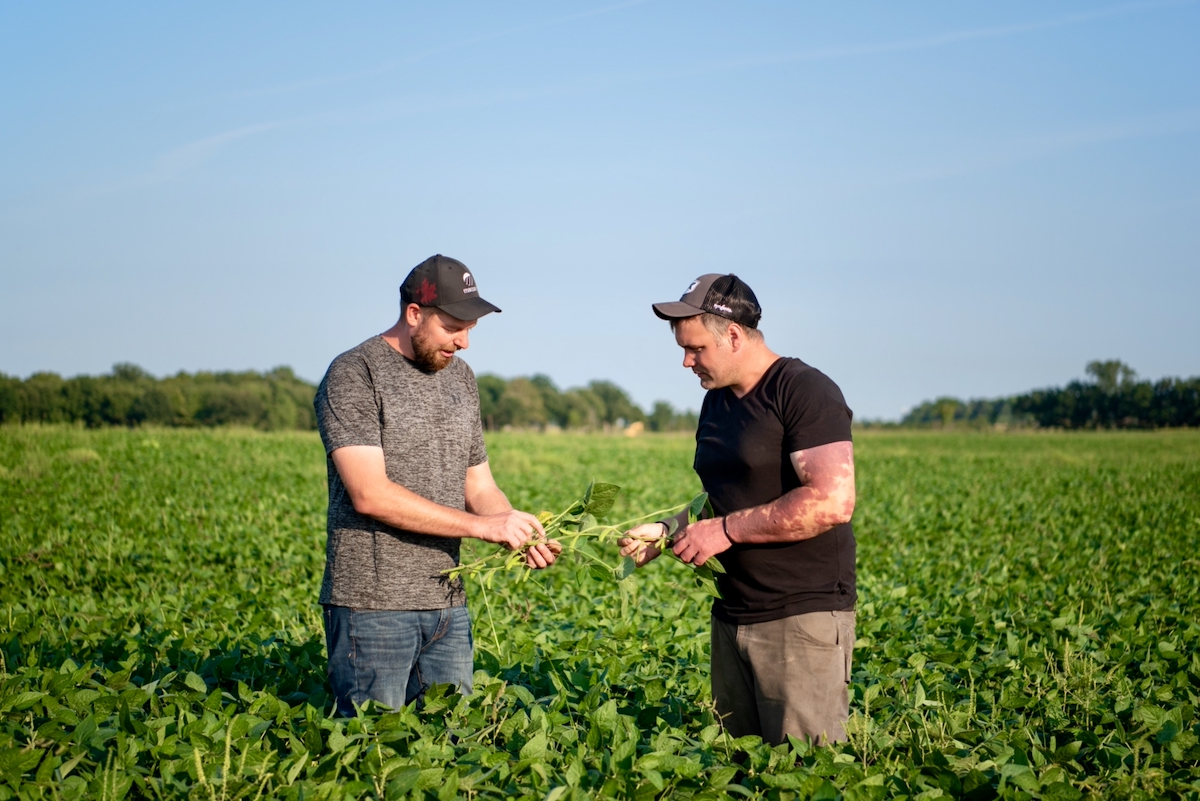For years Darwin Tatel used Canadian wheat at the San Miguel Mill in Batangas, Philippines, but then something changed.
“We stopped using CWRS awhile back when we encountered some problems in terms of quality,” said the head miller, who was in Winnipeg to take part in a technical exchange program at the Canadian International Grains Institute, or Cigi, last week. “We were surprised, of course, because we were using (Canada Western Red Spring) for quite some time, since 2002 or maybe even 2000, so we had been very surprised to see the quality just drop down like that.”
Read Also

Ontario farmers partner for success
Ontario business partners, Matt Bergman and DJ Wassenaar, have been farming together for 10 years. Their focus on integrating unconventional…
The head miller said complaints had been received from a number of clients, including Gardenia Bakery, which produces half a million loaves of bread every day.
Michael Santiago, production supervisor at Monde Nissin, said the same quality issues caused his Philippines-based company to turn to American wheat after years of using Canadian grain.
“I think the last time we used Canadian wheat was about 2014,” he said. “Because of the gluten, the protein, the inconsistencies in those, we had to change a lot of blends because of that, so then we moved to U.S. wheat.”
But after an intense week of comparing wheat quality, baking test breads, meeting farmers and representatives from various Canadian commodity groups, both say they feel confident that Canadian wheat can again meet their companies respective needs.
“They have assured us that the problems previously encountered have been addressed,” said Santiago.
That is exactly what Yvonne Supeene, the institute‚ head of baking technology, wants to hear. She said Cigi invited millers from the Philippines to participate in the technical exchange program in the hopes of bringing them back to Canadian wheat.
“The Philippines has been identified as a market that has potential growth for importing more CWRS, our principle class of wheat,” she said, adding exports of Canadian wheat to that country have declined in recent years.
“We’d like to work with the milling companies and give them exposure to the recent changes that have been made over the last number of years, collectively through co-operation among the whole value chain,” said Supeene. “We saw that decline in exports and we know they do require high-protein wheat, so that is part of the reason we are targeting millers there and showing them what we have.”
While the Canadian Grain Commission is responsible for monitoring and governing the quality of CWRS, not Cigi, Supeene said the institute worked with the commission, testing wheat and collaborating on strategies that would see that class of wheat become more defined in terms of quality.
“I think it is important to say that there was nothing wrong with the class before, it’s just that the feedback from our customers and the work that we were doing ourselves at Cigi and CGC, we collectively saw that the dough strength was becoming a little too mellow and we wanted to be very cautious,” she said, adding several changes have been put in place over the last few years to address any concerns customers might have.
“There were changes done at the quality evaluation committee level, introducing more stringent testing for varieties to even be registered within the class of CWRS, there was a floor and ceiling shift in the class itself, so they made the floor higher — in other words the strength has to be higher now for the varieties to enter into the CWRS class,” explained Supeene.
For Tatel, his first visit to Canada has paid off.
“We understand better now how the system of Canadian wheat is being handled,” he said, noting he and his peers will also leave with a better understanding of where and how Canadian wheat is grown.
“We haven’t been able to see a wheat field with live wheat in it, but we have seen acres and acres of land… and the kind of huge and sophisticated equipment they are using. We don’t have that in the Philippines as of yet, so we were kind of amazed,” said Tatel.
Santiago was also impressed, not just by the operation they visited, but by the determination shown to win back their customer loyalty.
“Canada wants us back and we can work on it,” he said.
This article originally appeared in the Manitoba Co-operator.















